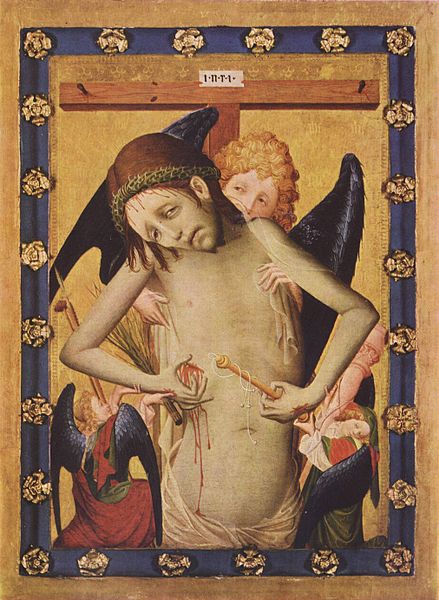Thursday, January 1
The Blood Hyphen on New Year's

I like starting the year off with the Solemnity of Mary, Mother of God. The title is simple, majestic, almost Byzantine. On a purely aesthetic level, it feels a weightier replacement, if a replacement must be found for the old feast of the Circumcision, than the preputic euphemism of the Holy Name of Jesus (though I am glad to see that too now has a place on the General Calendar again), or that weird period from 1960 to 1970 where it was apparently simply the nameless Octave Day of the Nativity. It is good to start the year with Mary.
That being said, there is a case to be made for today's older name, especially when placed, not against the New Year but within the sequence of feasts round Christmas. The renaming was probably inevitable given how modern man faints at a papercut--even if then sits impervious in front of a TV gorefest from the oeuvre of George Romero. It is especially a pity considering what good could have been got from it. As with the jettisoning of the feasts of the Maccabees, it is more than unfortunate that these elements of our liturgical tradition were not seen in a more ecumenical light. (Admitted, the removal of the Maccabees from the calendar was related to the embarassing discovery around then their purported relics at San Pietro in Vincoli were, of all things, pig bones, but their saintly example still retains its relevance.)
Furthermore, the feasts around Christmas are primarily feasts of events tied into salvation history--Christmas, Epiphany, the Baptism of the Lord, or, for instance, the Ambrosian feast of Christophoria, the return from Egypt. The intrusion of a more abstract title such as Mary's maternity into the sequence seems slightly jarring. (Okay, there's the Holy Family, I give you that, and the saints' days. But the Immaculate Conception is an event as well as a person.) It also lacks the distinct sacrificial-paschal aspect that the Circumcision with which the circumcision is so manifestly embued. This is when Christ, son of David, son of Abraham, becomes part of the Covenant whose promise he is about to fulfil; this is when He sheds His first blood for us. It reminds us Christ was a man, and had a male body, and this was not merely a concession to the male-chauvinist times, or was more than a Gnostic spirit or Nestorian prosôpon. (Or was that Docetism? After a while all elderly heretics with beards start to blur together.)
The medievals often placed the two events in relation to one another in their altarpieces; subtler ways enforced the connection. Art historians speak of the "blood hyphen" in mediaeval images of the crucifixion in which the blood from Christ's side streams down His side into His loin-cloth, reminding us of His Abrahamic roots, and of His own small passion as a baby, barely a week old. No longer does this dispensible custom become cruel, disturbing, quaint, or unseemly, but is once again plugged into the whole of salvation history.
Let us meditate on Mary and Her holy maternity today, and ask Her to take us under our cloak. But perhaps it would be just as good for us to meditate on Christ's blood, and love today as well.












